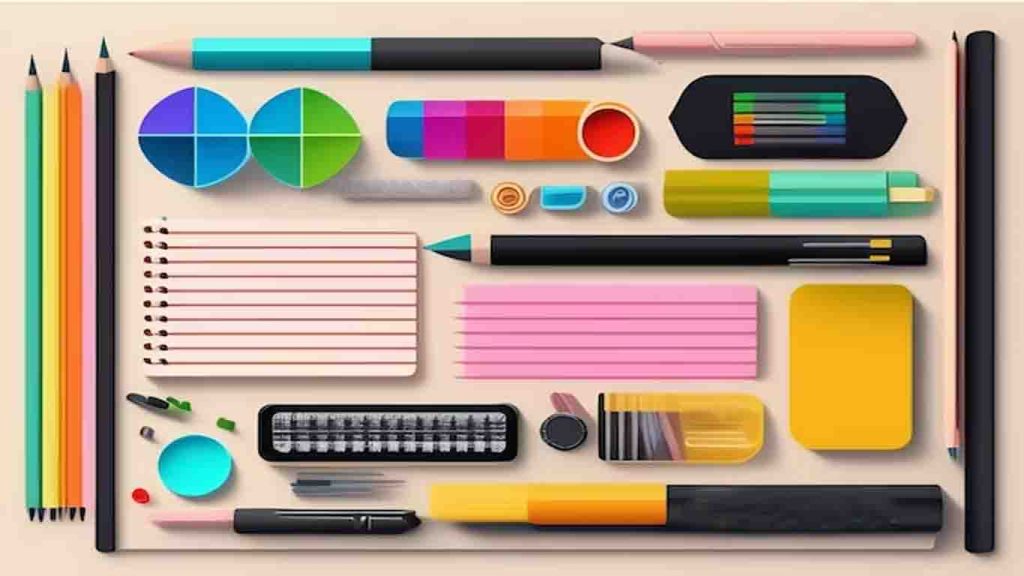Computer graphics refers to the field of study and practice of creating, manipulating, and displaying visual content using computers. It involves generating and rendering images, animations, and graphical elements using various algorithms, techniques, and software tools.
Computer graphics encompasses a wide range of applications and disciplines, including:
- 2D Graphics: Creating and manipulating two-dimensional images and graphics, such as digital art, logos, typography, and illustrations. This involves techniques like raster graphics (pixels) and vector graphics (mathematical equations).
- 3D Graphics: Creating and rendering three-dimensional objects and scenes, often used in movies, video games, virtual reality, and architectural visualization. 3D graphics involve techniques like modeling, shading, texturing, lighting, and rendering.
- Rendering: The process of generating a final image or animation from a 3D scene by simulating the behavior of light and materials. Rendering techniques include ray tracing, rasterization, and global illumination.
- Animation: Creating and manipulating a series of images to simulate motion. Computer animation techniques include keyframing, skeletal animation, motion capture, and procedural animation.
- Virtual Reality (VR) and Augmented Reality (AR): Creating immersive virtual environments or augmenting real-world environments with virtual objects. This involves real-time rendering, 3D tracking, and interactive user experiences.
- Image Processing: Manipulating and enhancing digital images using algorithms to improve their quality, remove noise, perform transformations, or extract information.
Computer graphics find applications in various fields, including entertainment, film production, video games, advertising, design, scientific visualization, medical imaging, and simulations.
To create computer graphics, professionals use software tools like graphic design software (e.g., Adobe Photoshop, Illustrator), 3D modeling and animation software (e.g., Autodesk Maya, Blender), and rendering engines (e.g., Pixar’s RenderMan, NVIDIA’s Mental Ray).
The field of computer graphics continues to evolve with advancements in hardware capabilities, rendering techniques, real-time graphics, virtual reality, and augmented reality, enabling more realistic and immersive visual experiences.
Types of computer graphics

There are several types of computer graphics, each serving different purposes and utilizing different techniques. Here are some of the common types of computer graphics:
- Raster Graphics: Also known as bitmap graphics, raster graphics represent images as a grid of pixels. Each pixel contains information about its color and intensity, allowing for detailed and realistic images. Common file formats for raster graphics include JPEG, PNG, and GIF.
- Vector Graphics: Vector graphics represent images using mathematical equations and geometric primitives such as points, lines, curves, and polygons. They are resolution-independent and can be scaled to any size without losing quality. Vector graphics are commonly used for logos, illustrations, and typography. Popular file formats for vector graphics include SVG, AI, and EPS.
- 3D Graphics: Three-dimensional graphics involve the creation and rendering of objects and scenes in a three-dimensional space. They are used in video games, movies, virtual reality, and simulations. 3D graphics utilize techniques like modeling, texturing, shading, lighting, and rendering to create realistic and immersive visuals.
- Computer-Generated Imagery (CGI): CGI refers to the creation of realistic or stylized images using computer graphics techniques. It is widely used in movies, television shows, and advertisements to generate visual effects, virtual environments, and characters that would be difficult or impossible to film in reality.
- Computer-Generated Animation: Computer-generated animation involves the creation of moving images and sequences using computer graphics techniques. It includes techniques like keyframing, skeletal animation, motion capture, and procedural animation. Computer-generated animation is commonly used in movies, video games, and animated TV shows.
- Interactive Graphics: Interactive graphics enable users to interact with and manipulate graphical elements in real-time. Examples include user interfaces, interactive data visualizations, virtual reality experiences, and video games. Interactive graphics require real-time rendering and input processing to provide a responsive and interactive user experience.
- Non-interactive graphics : Non-interactive graphics refer to static or pre-rendered visual elements that do not provide real-time interaction or user control. Unlike interactive graphics, non-interactive graphics are typically pre-determined and fixed, without the ability for users to manipulate or modify them directly.
- Scientific Visualization: Scientific visualization involves the graphical representation and exploration of scientific data, such as simulations, medical imaging, weather patterns, and molecular structures. It helps researchers and scientists analyze complex data sets and communicate their findings effectively.
These are just a few examples of the types of computer graphics. The field is vast and continually evolving, with new techniques and applications emerging over time.
Computer graphics software

Computer graphics software refers to applications and tools that are used to create, edit, manipulate, and render digital graphics and images. These software packages provide a wide range of features and functionality for both 2D and 3D graphics, allowing users to design and modify visual content on computers. Here are some popular computer graphics software:
- Adobe Photoshop: Adobe Photoshop is a versatile and widely used software for image editing and manipulation. It offers a comprehensive set of tools for creating and enhancing digital graphics, including photo editing, painting, drawing, and texturing.
- Adobe Illustrator: Adobe Illustrator is a vector graphics editor used for creating and editing scalable artwork. It is commonly used for creating illustrations, logos, icons, and other graphic design elements. Illustrator works with vector-based graphics, allowing for smooth scaling without loss of quality.
- Autodesk 3ds Max: Autodesk 3ds Max is a professional 3D modeling, animation, and rendering software widely used in the entertainment industry. It offers advanced tools for modeling, texturing, rigging, animation, and rendering of 3D objects, environments, and characters.
- Autodesk Maya: Autodesk Maya is another powerful 3D computer graphics software used for creating animated films, visual effects, video games, and more. It provides a comprehensive set of tools for 3D modeling, animation, simulation, and rendering.
- Blender: Blender is a free and open-source 3D creation suite that supports the entire 3D pipeline. It offers robust features for modeling, rigging, animation, simulation, rendering, and compositing. Blender has a strong community and is widely used by professionals and enthusiasts alike.
- CorelDRAW: CorelDRAW is a popular vector graphics editor used for graphic design, illustration, and layout creation. It provides tools for creating logos, brochures, posters, and other visual designs. CorelDRAW is known for its user-friendly interface and extensive feature set.
- GIMP: GIMP (GNU Image Manipulation Program) is a free and open-source raster graphics editor. It offers a wide range of tools for photo retouching, image composition, and graphic design. GIMP is often considered as a free alternative to Adobe Photoshop.
- Sketch: Sketch is a vector-based design tool specifically developed for creating user interfaces (UI) and user experience (UX) designs. It is widely used by web and app designers for prototyping, wireframing, and creating pixel-perfect designs.
- Affinity Designer: Affinity Designer is a professional vector graphics editor available for both macOS and Windows. It offers a robust set of tools for creating illustrations, icons, UI designs, and more. Affinity Designer is known for its speed, precision, and non-destructive editing capabilities.
- Inkscape: Inkscape is a free and open-source vector graphics editor similar to Adobe Illustrator. It provides tools for creating and editing scalable vector graphics. Inkscape supports a wide range of file formats and is popular among artists, designers, and hobbyists.
These are just a few examples of computer graphics software available in the market. The choice of software depends on the specific needs, preferences, and budget of the user, as well as the type of graphics they intend to create or work with. Table are given below for extra information.
| Computer graphics software | Cost | Features | G2 rating |
|---|---|---|---|
| ZBrush | $29.91/month | Sculpting, brush variety, topology, polygon modeling, flexible workflows, remeshing options | 4.6/5 |
| Blender | Free and open source | Lighting, textures, and shading, sculpting, modeling, and rendering | 4.5/5 |
| Adobe Illustrator | $20.99/month after free trial | Ready-made templates, 3D effects, intertwine text and image, preview color and opacity in real time | 4.6/5 |
| Adobe Photoshop | $20.99/month after free trial | Install plugins, save documents as cloud documents, neutral filters, selection improvements, live gradients | 4.6/5 |
| Maya | $225/month | Polygon modeling, rendering, cached playback, motion graphics, 3D rendering and shading | 4.3/5 |
Importance of computer graphics

Computer graphics play a significant role in various fields and have become increasingly important in today’s digital world. Here are some key reasons highlighting the importance of computer graphics:
- Communication and Visualization: Computer graphics enable effective communication and visualization of complex information. They allow us to represent data, concepts, and ideas visually, making it easier for people to understand and interpret information. Graphics can convey information more intuitively and succinctly than text alone.
- Design and Creativity: Computer graphics software empowers designers and artists to unleash their creativity and bring their ideas to life. Whether it’s designing logos, creating digital artwork, or developing visually appealing user interfaces, computer graphics provide the tools and capabilities to express creativity and produce visually stunning designs.
- Entertainment and Media: Computer graphics have revolutionized the entertainment industry, including films, video games, animations, and virtual reality experiences. They enable the creation of realistic and immersive environments, characters, and special effects, enhancing the overall visual experience for audiences.
- Simulation and Training: Computer graphics are extensively used in simulations and training applications. They allow for the creation of virtual environments that simulate real-world scenarios, enabling training and practice without real-life risks or expenses. Fields such as aviation, medicine, engineering, and military training heavily rely on computer graphics for simulations and virtual training.
- Advertising and Marketing: Computer graphics play a crucial role in advertising and marketing campaigns. They help create eye-catching visuals, product renderings, animations, and interactive content to attract and engage consumers. Graphics contribute to building brand identity and effectively conveying messages to target audiences.
- Scientific Visualization: Computer graphics aid in the visualization and analysis of scientific data. They help researchers and scientists interpret complex data sets, such as climate models, molecular structures, astronomical data, and medical imaging. Visualizing data through graphics enables better understanding, pattern recognition, and discovery of insights.
- Architectural Design and Visualization: Computer graphics software is widely used in architectural design and visualization. It allows architects and designers to create 3D models, renderings, and walkthroughs of buildings and spaces. Graphics help in presenting designs to clients, evaluating design choices, and simulating lighting and material effects.
- User Experience (UX) and User Interface (UI) Design: Computer graphics are crucial in creating visually appealing and user-friendly interfaces for software applications, websites, and mobile apps. Graphics enhance the overall user experience by providing visually pleasing layouts, icons, buttons, and interactive elements.
- Data Visualization and Infographics: Computer graphics aid in presenting data and information in a visually engaging and accessible manner. Infographics and data visualizations make complex data sets and statistics easier to comprehend, facilitating data-driven decision-making and storytelling.
- Innovation and Advancements: The continuous advancements in computer graphics technology drive innovation in various industries. Improved rendering techniques, realistic simulations, virtual reality, augmented reality, and computer-generated imagery (CGI) have opened up new possibilities in entertainment, education, research, design, and many other domains.
Overall, computer graphics have a profound impact on our daily lives, enabling effective communication, artistic expression, immersive experiences, and data analysis. They have transformed numerous industries and continue to shape the way we perceive and interact with digital content.
Computer – KnowledgeSthali


Magnificent goods from you, man. I’ve have in mind your stuff previous to and you’re simply extremely excellent. I actually like what you have received right here, certainly like what you are saying and the way wherein you assert it. You make it enjoyable and you continue to care for to keep it wise. I cant wait to read far more from you. That is actually a terrific web site.